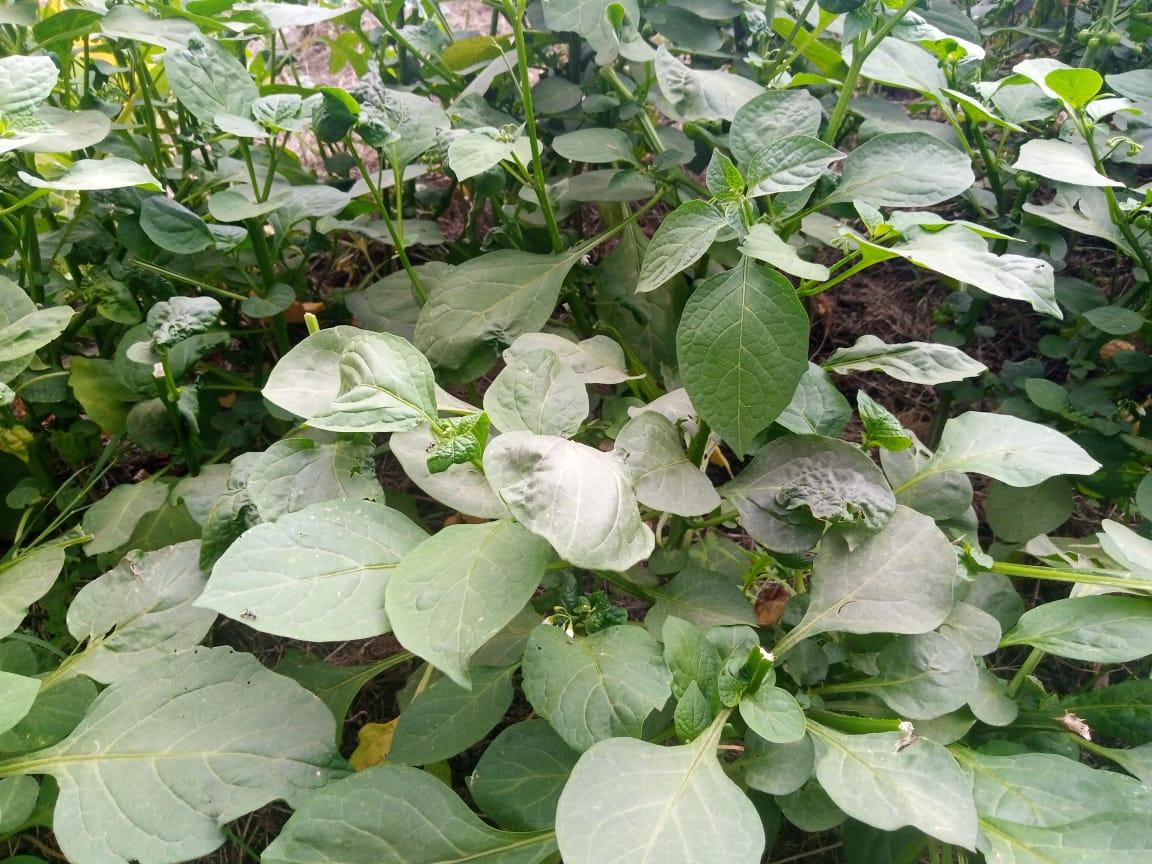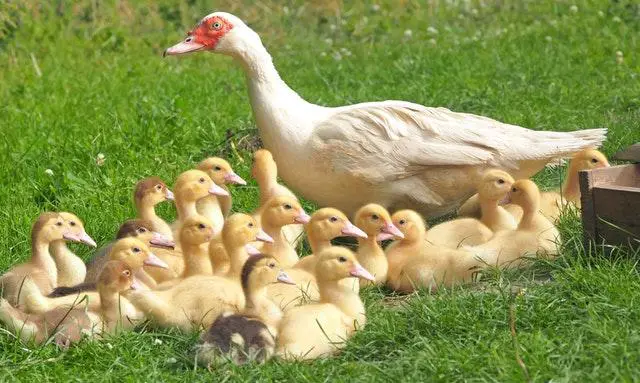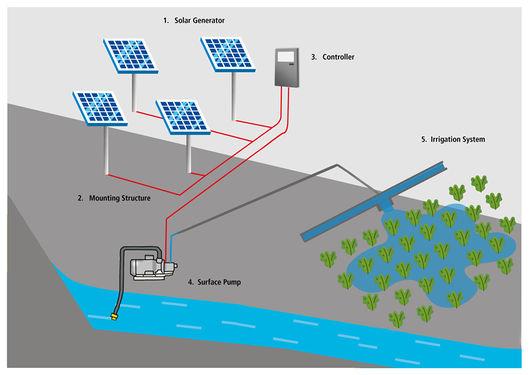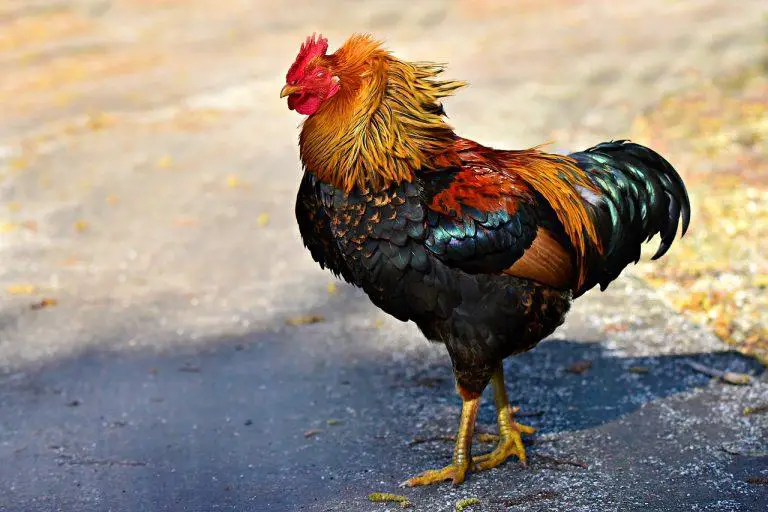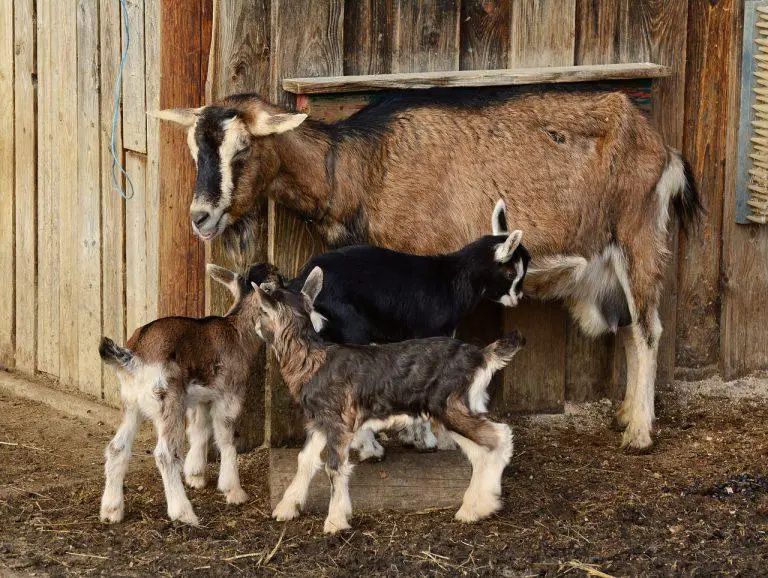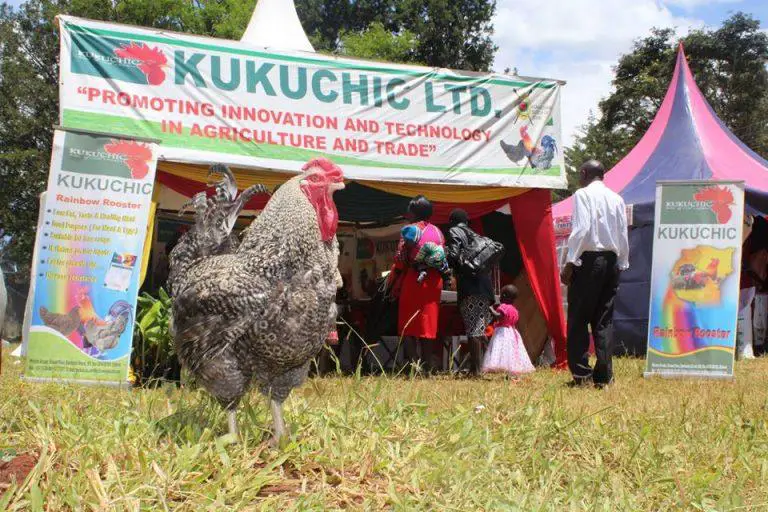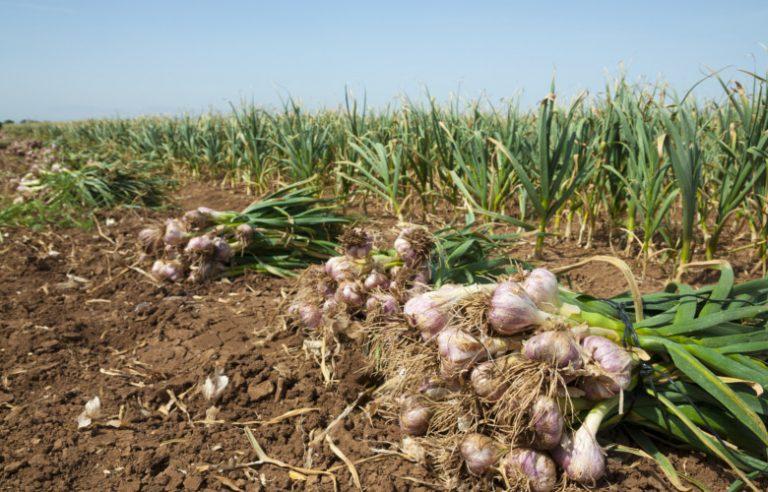How to grow Managu (African Nightshade)
The African nightshade / black nightshade, commonly referred to Kenya as Managu, is grown as an edible vegetable in Kenya. It is cherished for its nutritious benefits and has been used in traditional African medicine over the ages.
As people grow more health-conscious, they are adding Managu and other traditional African vegetables to their diet. This is due to the fact that they are rich in nutrients.
Managu farming would be a great addition to your farm because of its short maturity period of up to 60 days and a good harvest period of up to 4 months. It also has a ready market in urban areas as most people consume green vegetables as part of their meals on a daily basis.
History of the African Nightshade
Growing wildly and in some cases treated as a weed, the African Nightshade is growing in popularity as a vegetable. This is attributed to the shift in mindset for the urban middle class and the rich. Managu was viewed as food for the poor, who could not afford to purchase exotic swiss chard and collard greens (Sukuma Wiki). Instead, they would pick and cook the “weed” that grew by itself in their small subsistence farms.
The mental shift from perceiving managu as food for the poor, to a vegetable that can be consumed daily by everyone, has been largely attributed to increased awareness campaigns promoting its health benefits. This has made managu a commercially viable crop that can be profitable with good management practices.
The African nightshade was popular in traditional African societies, as food, and for medicinal purposes. It has a name in nearly every African language. Examples of these are Mnavu in Swahili, Osuga in Luo, Namaska in Luhya, Kitulu in Kamba, Ndunda in Taita.
Health Benefits of African Nightshade.
Rich in Magnesium, Proteins, Phosphorus, Iron, Calcium, Beta Carotene, Folic Acid, Vitamin E and Folic Acid, Managu is highly nutritious and has been known ot help in:-
- Digestion – Due to it;s high fibre content, Managu is good for the gastrointestinal system, proving the much needed fibre needed for bowel movement. This improves digestion and helps deal with constipation.
- Immunity – In conjunction with amaranth, managu is used as a food for people with HIV/AIDS to boost their immunity.
- Jaundice – In India, leaves, and berries of the African nightshade are boiled used to prevent and treat jaundice and other ailments associated with the liver since it strengthens the liver muscles. Jaundice is an indication of a problem in the liver or the bile duct.
- Stomach aches – The Kamba of Kenya used to use the leaves to treat stomach aches.
- Malnutrition – Due to its high nutrient content, the African nightshade is recommended as one of the foods to control malnutrition, since the leaves contain vitamins A and C, iron, lipid calcium protein, and carbohydrates
- Teething pain – The Maasai and Kamba used to crush the managu seeds and rub it on the gums of teething babies in order to control teething pain.
- Tonsillitis – The Kamba used to pound the leaves and use the resulting extract for treating tonsillitis.
- Tonic – The Maasai used to build to roots in milk and give it to babies as a tonic
Varieties of African Nightshade
When selecting a variety for African Nightshade, be careful as you source for your Managu seeds, as the plant has some varieties that are poisonous. An example is the Solanum Nigrum, found mostly in Europe.
There is a varied market demand for Managu, with some people preferring the bitter ones and others going for the “sweet” ones. When selecting a variety to plant, you should consider the preferences of your target market.
The Managu varieties grown in East Africa for home consumption include:-
- Solanum Eldoreti – Solanum Eldoreti grows well in high altitude areas. It had broad leaves and produces small fruits that are purple in color.
- Solanum scabrum – Solanum Scabrum has bi leaves, grows well in areas that receive medium-altitude regions with high amounts of rainfall. It produces fruits that are black in colour when ripe.
- Solanum Americanun – Solanum Anericanum produces small black fruits and grows well in areas with high humidity.
- Solanum Villosum – Solanum Villosum produces small orange fruits that are edible. It does well in low altitude areas.
Ecological Requirements for growing African Nightshade
The different varieties of Managu grow well in different regions. The altitude for growing Managu ranges from 0 metres above sea level to 2400 metres above sea level with Solanum Villosum growing up to 2400 metres above sea level, Solanum Americanum growing well in low altitudes and in coastal areas. Solanum scabrum grows well at altitudes up to 2000 metres above sea level.
The region should have an annual rainfall of between 500mm to 1000mm, though supplemental watering is advisable in order to meet the demands of the market
African Nightshade grows well in areas with warm temperatures and requires soils that drain well and have high organic matter content. This is because Managu needs a lot of nitrogen and other nutrients that are found in plenty in organic matter such as animal manure. The optimal soil pH for Managu is between 5.8 to 6.6.
African Nightshade (Managu) Yield Per Acre
The yield per acre for Managu is between 4 tonnes and 8 tonnes per acre, depending on the management and variety of Managu planted.
Land Preparation for planting African Nightshade
Land preparation for planting Managu involves preparing the nursery and the farmland where the plants will grow. You can raise Managu seedlings either in germination trays or a nursery. You will not require a nursery if you choose to sow Managu seeds directly into the farm.
Nursery preparation for planting Managu
The location of the nursery should be where no other plant in the same family has been grown for the last 3 years. These include tomatoes, chilies, capsicum, etc. The nursery for planting Managu seedlings should be 1 metre wide and of any length.
The seed rate for the African nightshade (Managu) is 50g per acre. Make sure you use clean seed that has been tested, as Managu is prone to seed transmitted diseases.
Loosen the nursery soil and apply well-decomposed manure, making sure that the manure is well incorporated into the soil. Make drills that are 10 to 20 centimetres apart, where you will then sow the seeds and cover them lightly with soil.
You will need to water the nursery regularly, as the seeds need moisture to germinate. The young seedlings will also need watering so that they grow well. Apply mulch thinly on the nursery garden so as to conserve water. Remove the mulch after the seedlings emerge.
The African Nightshade seedlings will be ready for transplanting 30 days after seeding or when they have 5 to 6 true leaves and a height of between 10 to 15 centimetres.
Land preparation for planting African Nightshade
The plot where you want to plant Managu should be ready weeks before the transplanting date. Phosphorus fertilizer should be applied in the form of DSP at the rate of 75 kgs per acre.
As Managu needs a lot of organic matter, manure or compost should be applied at the rate of 8 tonnes per acre, 2 weeks before transplanting. Ensure the manure is well incorporated into the soil.
The planting rows for Managu should be 30 centimetres apart.
Transplanting Managu
After 30 days, the Managu seedlings should have 5-6 true leaves, at a height of 10 to 15 centimetres. The seedlings should be moved from the nursery to the farm plot, after watering the nursery to soften the soil.
Plant the seeds in the already prepared rows of 30 cm apart, with the spacing between the plants being 15cm.
If you skipped the nursery stage, in preference to direct seeding, plant the Managu seeds directly onto the rows. For uniform distribution, mix the seeds with soil or sand. The seed to soil ratio should be 1:15 and seed to sand ratio should be 1:20. Planting the seeds directly enables the Managu plants to be established faster, and develop large leaves quickly. The plants will also not suffer from transplant shock.
If you choose to plant the seeds directly, you will need to thin the plants in 4 weeks, in order to get the correct spacing of 15cm apart between the plants. You will need to thin several times in order to get the right spacing. You can transplant the thinned seedlings to another plot or sell them.
14 days after transplanting or 6 weeks after direct seeding, cut off the tips of the plant so that they can develop more branches. This leads to the plant developing more leaves.
Fertilizer and Manure requirements for Managu
- DSP/DAP should be applied to the soil at the rate of 75 kilograms per acre as the land is being prepared for planting. This will give the African Nightshade the much-required phosphorus.
- Alternatively, manure or compost at the rate of 8 tonnes per acre should be incorporated into the soil 2 weeks before transplanting Managu seedlings.
- Another option is to apply 8 tonners of manure with 40 kgs of DAP per acre.
- Topdressing with CAN or SA should be done after weeding for the second time in order to give the African Nightshade plant the much-needed Nitrogen.
Irrigation Requirements for African Nightshade
Irrigation through drip irrigation or overhead irrigation is needed to give your Managu plants the much-needed water. This is done when there are no rains and the soil is dry. Drip irrigation is the most recommended since it conserves water, but it is costly for most farmers. The important thing is to ensure your Managu plants have enough water to ensure good productivity.
The frequency of irrigation depends on the type of soil. For clay and loam soil, irrigate once a week, for sandy soils irrigate three times a week and for sandy loam soils, irrigate two times a week.
Intercropping African Nightshade
Brassicas eg kales, collards, cabbages, broccoli are the best intercropping partners for African Nightshade. Research in Egerton University, Kenya has shown that intercropping crops from the nightshade family increase the leaf yield of kales (Sukuma Wiki).
You should not intercrop with plants from the same family e.g tomatoes, potatoes, chilis, etc as they are susceptible to the same diseases and viruses.
Weed Control for African Nightshade
Weeding in your African nightshade farm should be done so as to remove weeds that will compete for resources with the plants. Mulching, in addition to adding nutrients to the soil and conserving water, is a good method for controlling weeds.
Diseases affecting African Nightshade
Managu shares the same disease that affects the nightshade family. Just like any diseased living organism, diseases on your Managu plants will lead to poor quality of produce. The major ones are:
- Early Blight
- Bacterial blight
Early Blight in African Nightshade
This is a plant disease that is common in areas where the climate is hot and humid. Once early blight affects your African Nightshade plants, it becomes very hard to control it.
Early blight in Managu is characterized by big round brown circular spots that start on the oldest leaves and then progresses to the other part of the managu plant. Eventually, the whole plant will drop all leaves and die.
To control early blight in African nightshade:-
- Use tested and approved seeds, and if you produce your own seeds, treat them with hot water
- Pluck and destroy all infected Managu leaves, and plant remains.
- If your farm is in a hot and humid area, increase the spacing between your plants
- Rotate your crops from season to season, especially with crops like Amaranth. Avoid rotating with crops from the same family, for example, tomatoes, capsicum, and potatoes.
Bacterial Blight in African Nightshade
If your African nightshade is infected with bacterial blight, you will notice small round wet spots on the leaves that will ultimately turn black and hard.
Bacterial blight in Managu is hard to control, so when you notice your plants, do not grow African nightshade for 4 years.
To avoid bacterial blight on your African nightshade:-
- Used tested and approved seeds. If using your own seeds, treat them with hot water
- Practice crop rotation. Do not grow Managu on the same piece of land, if you notice the disease, for 4 years.
Pests affecting African Nightshade
Just like the diseases affecting African Nightshade, Managu shares the same pests with other plants from the Nightshade family. These are:-
- Aphids
- Cutworms
- Root-Knot Nematodes
- Flea Beetles
Aphids on African Nightshade
If you notice that some of your Managu leaves are curling from the edges and loosing their smooth shape, look underneath. You will most likely see tiny light green insects, sometimes covered in whitish powder. Meet the Aphids, tiny pests that cause huge damage on African nightshades. They suck plant sap from the plant, deriving the plant with the much-needed nutrients.
To control aphids in African nightshade, use ash or use pesticides such as Karate. If using pesticides, make sure you observe the recommended preharvest interval before harvesting the Managu leave.
Cutworms
Cutworms as the name suggest cut the plants entirely or partially by feeding on the base of the stem. They are brown or black in color and usually hide near the base of the African nightshade plant, coming out at night to eat.
To control cutworms in African Nightshade, remove weed early enough, so as to destroy their egg-laying areas. You can also remove the cutworms by hand, as they are easily found near the soil where they cut the plant.
Root-Knot Nematode
Root-knot nematodes affect the roots of the African nightshade plants. They are characterized by galls, which are swollen parts of the roots. They lead to poor uptake of water and nutrients from the soil, leading to stunted African nightshade plants.
To control root-knot nematodes in African nightshade, practice crop rotation with crops from a different family. A lot of manure applied to the soil is also known to control nematodes. Leaving the land bare for one or two seasons will also get rid of nematodes.
Flea Beetle
Flea beetles feed on plant material. They will leave big holes on leaves of African nightshade plants, especially when the plants are young.
To control the flea beetle in the African nightshade, make sure you remove all the weeds and destroy any plant material that might be the host for flea beetles.
Harvesting and Post Harvest of Managu
Your Managu plants will be ready for harvest 30 days after transplanting for nursery raised ones and 60 days for the ones that were planted directly on to the farm.
Harvesting Managu
There are are two methods for harvesting Managu:-
- Complete uprooting – the whole African nightshade plant is uprooted and sold as a whole. This method is not common as the farmer will only have one harvest
- Plucking Leaves – With this method, leaves are plucked from the plant on a weekly basis. This commences after 60 days of planting ( 30 days after transplanting ). This method is the most preferred as it gives the farmer continual produce for 3 to 4 months. Remove the flowers regularly to ensure the plant continues to produce more leaves, instead of focusing its resources on developing the fruits.
African nightshade fruits can be harvested for its seeds and also for value addition as Jam and dye.
Post harvest handling for Manager
Managu leaves are harvested in the morning, to be taken to the market during the day. Alternatively, they can be harvested in the afternoon, stored in plastic bags or banana leaves, to keep them fresh and taken to the market the next day.
Sorting is done to remove dried or yellowed leaves and insects from the African Nightshade harvest. Grading African Nightshade leaves is done according to the size of leaves, with same-sized leaves being bundled together.
Fresh Managu leaves can be washed, blanched, and dried. They can be dried and stored in plastic containers for future use.
Value Addition for African Nightshade
Managu seeds can be used to make jam or dye. Dried leaves can be mixed with other dried vegetables, packaged well, and sold as a dried vegetable mix.

